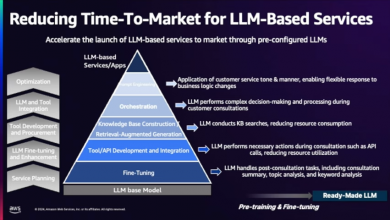OpenShift Commons: SaskTel’s Telco Cloud Native Journey with Jerrad DeBolt and Aaron Chartier
Exploring SaskTel's experience in adopting cloud-native technologies and the benefits it has brought to their telecommunications business.
 In this article, we will provide a summary of the OpenShift Commons Youtube video titled “SaskTel’s Telco Cloud Native Journey with Jerrad DeBolt and Aaron Chartier”.
In this article, we will provide a summary of the OpenShift Commons Youtube video titled “SaskTel’s Telco Cloud Native Journey with Jerrad DeBolt and Aaron Chartier”.
The video discusses SaskTel’s experience in adopting cloud-native technologies and the benefits it has brought to their telecommunications business.
SaskTel, a leading telecommunications company, embarked on a journey to adopt cloud-native technologies to enhance their operations and provide better services to their customers.
The Journey to Cloud Native
SaskTel recognized the need to modernize their infrastructure and embrace cloud-native technologies to stay competitive in the rapidly evolving telecommunications industry. They started by evaluating their existing systems and identifying areas that could benefit from cloud-native solutions.
Through a step-by-step approach, SaskTel gradually migrated their applications and services to a cloud-native architecture. This involved containerization, microservices, and the adoption of Kubernetes as the orchestration platform. The company also invested in training their teams to ensure a smooth transition.
Challenges Faced
During their cloud-native journey, SaskTel encountered several challenges. Legacy systems and monolithic applications posed difficulties in the migration process. Ensuring compatibility and seamless integration between different components was a complex task. Additionally, cultural resistance to change and the need for extensive testing added to the challenges faced.
Solutions Implemented
To overcome these challenges, SaskTel implemented various solutions. They adopted a phased approach, starting with less critical applications and gradually moving towards more complex ones. This allowed them to learn from each phase and refine their processes.
The company also leveraged the power of automation to streamline their deployment and management processes. By implementing CI/CD pipelines and infrastructure-as-code practices, SaskTel reduced manual efforts and improved efficiency.
Benefits of Cloud Native
The adoption of cloud-native technologies brought several benefits to SaskTel. They experienced improved scalability, allowing them to handle increased traffic and demand without disruptions. The use of microservices enabled faster development cycles and easier maintenance of applications.
Furthermore, the cloud-native approach enhanced the company’s ability to innovate and introduce new services to the market quickly. By leveraging the flexibility and agility of cloud-native technologies, SaskTel gained a competitive edge in the telecommunications industry.
Conclusion
SaskTel’s journey to cloud-native architecture has proven to be a transformative experience. By embracing containerization, microservices, and Kubernetes, the company has modernized its infrastructure and improved its ability to deliver innovative services to customers. The challenges faced along the way were overcome through careful planning, phased implementation, and the adoption of automation. The benefits of cloud-native technologies, such as scalability, agility, and faster development cycles, have positioned SaskTel as a leader in the telecommunications industry.



